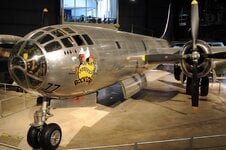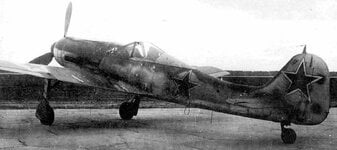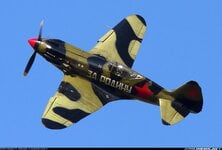Warbringer
Recruit
- 1
- Sep 21, 2024
I have a conversation about the VVS's ability to react and intercept the super fortresses if Operation Unthinkable right in 1945 if it is carried out, there are a few questions and want to ask you guys in here, if in the case if a strategic bombing will take place targeting important cities of the Soviet Union such as Moscow or Leningrad, what will be the VVS's ability to react?
- If this happened, where would the Allies start bombing, what bases would they have to fly thier B-29 and escort fighter to strategic bombings on Soviet cities, would they take off from Germany, France or was there a country closer enough to have an airport for the B-29 to take off from?
- From France or Germany to Moscow is quite a long way, is there any escort fighter capable of doing this mission, I think of P-47N and P-51D but am wondering about the amount of combat fuel it has.
- Can the Mig-3 or can any Soviet high altitude interceptors have the speed and ability to intercept the B-29 at 25,000 to 30,000 feet?
- I have seen some sources on the internet and Wiki mentioning the La-7's service ceiling of over 30,000 feet but I have not found any documents talking about its capabilities or speed at 30,000 feet (typically I find the La-7's top speed at 25,000 feet to be around 372mph.)
So my question is, was the La-7 or any Soviet fighter capable of competing with any Allied escort aircraft at 30,000 feet altitude and why?
- The Soviet Union also had a lot of captured German planes, do you guys think it would be able to intercept them?
- If this happened, where would the Allies start bombing, what bases would they have to fly thier B-29 and escort fighter to strategic bombings on Soviet cities, would they take off from Germany, France or was there a country closer enough to have an airport for the B-29 to take off from?
- From France or Germany to Moscow is quite a long way, is there any escort fighter capable of doing this mission, I think of P-47N and P-51D but am wondering about the amount of combat fuel it has.
- Can the Mig-3 or can any Soviet high altitude interceptors have the speed and ability to intercept the B-29 at 25,000 to 30,000 feet?
- I have seen some sources on the internet and Wiki mentioning the La-7's service ceiling of over 30,000 feet but I have not found any documents talking about its capabilities or speed at 30,000 feet (typically I find the La-7's top speed at 25,000 feet to be around 372mph.)
So my question is, was the La-7 or any Soviet fighter capable of competing with any Allied escort aircraft at 30,000 feet altitude and why?
- The Soviet Union also had a lot of captured German planes, do you guys think it would be able to intercept them?
Attachments
Last edited:




